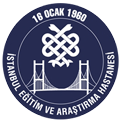ABSTRACT
Objective:
There is a strong relationship between the cancer stem cells (CSCs) and poor prognosis, metastasis and recurrence. In addition to this CSCs are resistant to chemotherapy and radiotherapy. Therefore, current treatment approaches may be ineffective to elimination of CSCs. The tumor cells have various adaptations for escaping from immune cells. The human leukocyte antigen (HLA) -G, which expressions restricted with fetal tissues and HLA-E are kind of tumor immune evasive adaptations. In this study, we aimed to investigate the relationship between the CSCs and immune evasive adaptations of breast tumors.
Methods:
We immunohistochemically evaluated that the expressions of cluster of differentiation (CD) 44, CD133, Homeobox protein Nanog, octamerbinding transcription factor (Oct) 3/4, HLA-G and HLA-E in the advanced stage breast cancer tissues (n=10) and the non-malignant breast biopsies (n=10).
Results:
We detected that the significantly increased expressions of especially Nanog (p<0.001) and also CD44 (p<0.001), CD133 (p<0.001) and Oct3/4 (p<0.001) in the advanced stage breast tumor group compared with non-malignant breast biopsies group, but the HLA-G (p<0.001) and HLA-E (p<0.001) decreased.
Conclusion:
These findings suggested that, malignant breast tumors may have CSC-like cells, and these cells may play role for occurring malignant behavior. To proliferation and tumor formation, the immune evasion is essential for both of malignant and benign tumors. Higher expressions of HLA-G and HLA-E may be an indication that the nonmalign tumors more immune evasive than the malign tumors. However, further prospective studies are needed to confirm our findings.



